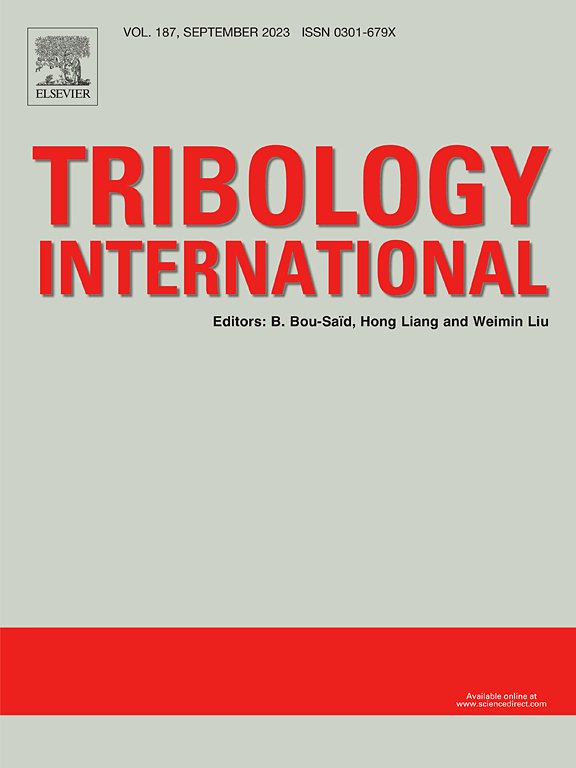Effect of Ni@MoS2 addition on the microstructure and tribological performance of β-phase matrix composite coatings
IF 6.1
1区 工程技术
Q1 ENGINEERING, MECHANICAL
引用次数: 0
Abstract
The NiCr-Cr3C2/Ni@MoS2/Ti6Al4V self-lubricating and wear resistant composite coatings were successfully fabricated on the surface of Ti6Al4V via laser cladding. The effect of Ni@MoS2 addition on the microstructure of the composite coating was investigated through a combination of first-principles calculations and experimental characterization. Subsequently, the intrinsic relationship between the microstructural evolution of and the wear properties of composite coatings was elucidated. The results demonstrated that the composite coatings with varying Ni@MoS2 dosages consisted of β phases matrix, along with in-situ synthesized TiC, Ti2Ni, Ti2S, and TiS3 phases. First-principles calculations and experimental results indicated that the sufficient in-situ synthesis of a lubricating phase (TiS3) with two-dimensional layered structures and a strengthened phase (Ti2S) effectively inhibits adhesion wear and enhances surface bearing capacity. Consequently, the composite coating containing 20 wt% Ni@MoS2 exhibits reduced coefficient of friction (COF) and wear rates simultaneously.
求助全文
约1分钟内获得全文
求助全文
来源期刊

Tribology International
工程技术-工程:机械
CiteScore
10.10
自引率
16.10%
发文量
627
审稿时长
35 days
期刊介绍:
Tribology is the science of rubbing surfaces and contributes to every facet of our everyday life, from live cell friction to engine lubrication and seismology. As such tribology is truly multidisciplinary and this extraordinary breadth of scientific interest is reflected in the scope of Tribology International.
Tribology International seeks to publish original research papers of the highest scientific quality to provide an archival resource for scientists from all backgrounds. Written contributions are invited reporting experimental and modelling studies both in established areas of tribology and emerging fields. Scientific topics include the physics or chemistry of tribo-surfaces, bio-tribology, surface engineering and materials, contact mechanics, nano-tribology, lubricants and hydrodynamic lubrication.
 求助内容:
求助内容: 应助结果提醒方式:
应助结果提醒方式:


